Our 9 days Uganda safari take you to see some of the best that Uganda has to offer in terms of wildlife. You will have encounters with the big five mammals, chimpanzee, gorillas, smaller primates and amazing scenery/landscape. The 9 Days Uganda wildlife safari starts with a visit to the beautiful lake Bunyonyi for relaxation, canoeing, island hopping and a community visit. The safari includes a visit to Bwindi Impenetrable National Park. This park is home to half of the remaining population of mountain gorillas.
Gorilla trekking in Bwindi may be the most popular activity but visitors also get a chance to observe other smaller primates and forest creatures. The safari also includes a visit to Queen Elizabeth National Park. Queen Elizabeth is the most visited national park in Uganda and is home to tree climbing lions, 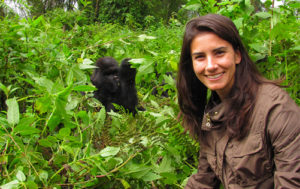 crater lakes and other amazing landscape. While on a tour of the Kazinga Channel of Queen Elizabeth, tourists are rewarded with one of the most amazing collection of wildlife in Africa.
crater lakes and other amazing landscape. While on a tour of the Kazinga Channel of Queen Elizabeth, tourists are rewarded with one of the most amazing collection of wildlife in Africa.
Our 9 days Uganda tour also includes a stop at Kibale National Park for chimpanzee trekking. Kibale National Park is also home to hippos, buffaloes, forest elephants and spotted hyena among other forest creatures. A safari in Uganda is incomplete without visiting the Murchison falls National Park. The Murchison falls is arguably the best national park to go for a safari in Uganda. It has chimpanzees and most of large mammals of Africa. The Murchison Falls also has one of the most beautiful waterfalls in Uganda. While visiting Murchison Falls National Park, you also have an opportunity to visit the Ziwa Rhino Sanctuary for an opportunity to learn about what the government and other wildlife conservation organization are doing to protect Uganda’s last remaining Rhinos. If you are looking for a longer safari, you might find our 14 days Uganda Rwanda Safari package more interesting. For a shorter tour, check out our 8 days Uganda wildlife safari package. We also have an amazing 10 days Uganda and Rwanda tour package involving double gorilla trekking in the two countries . There is also a 10 Days Uganda safari package for those who are targeting Uganda only.
Highlights of the Safari
Day 1: Pickup from Kampala or Entebbe – Transfer to Lake Bunyonyi
Day 2: Canoeing, Island hopping and swimming – Transfer to Bwindi – Visit the Batwa Pygmies
Day 3: Gorilla Tracking – Transfer to the Ishasha sector of Queen Elizabeth National Park
Day 4: Game drive to see tree climbing lions – Afternoon Boat cruise at the Kazinga Channel
Day 5: Morning game drive at the Kasenyi Sector – Transfer to Kibale National Park – Visit the Bigodi Wetlands Sanctuary.
Day 6: Chimpanzee Habituation Experience
Day 7: Transfer to Murchison falls – Visit the top of the falls
Day 8: Morning Game drive – Afternoon Launch cruise on the river Nile
Day 9: Visit the Ziwa Rhino Sanctuary – Transfers to Kampala or Entebbe
Full Itinerary
Day 1: Pickup from Kampala or Entebbe – Transfer to Lake Bunyonyi.
Wake up early morning and take breakfast as you wait for the company driver. The Driver will brief you about the tour and let you know where to get any equipment or change money. The journey to Lake Bunyonyi 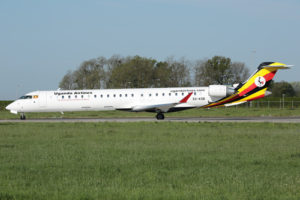 is long but very interesting as it offers travelers a chance to observe the life in rural Africa. You will see for yourself how the local people go about their daily life away from the traffic jam and busy life in the capital Kampala. The south western part of Uganda is blessed with incredible scenery – lakes, rivers, mountains, national parks, forests, rolling hills, tea plantations and changing vegetation. Expect to enjoy the journey if you love nature and are a keen observer. There will be stopovers at various landmarks including at the equator crossing for an opportunity to take photos. Lunch will be taken along the way before continuing to Lake Bunyonyi.
is long but very interesting as it offers travelers a chance to observe the life in rural Africa. You will see for yourself how the local people go about their daily life away from the traffic jam and busy life in the capital Kampala. The south western part of Uganda is blessed with incredible scenery – lakes, rivers, mountains, national parks, forests, rolling hills, tea plantations and changing vegetation. Expect to enjoy the journey if you love nature and are a keen observer. There will be stopovers at various landmarks including at the equator crossing for an opportunity to take photos. Lunch will be taken along the way before continuing to Lake Bunyonyi.
Once you reach the lake, the driver/Guide will take you to the lodge for check-in, shower and refreshment. You can then go for a nature walk along the lake shores and then relax as you watch the 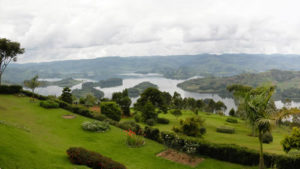 sunset. Lake Bunyonyi (place of little birds) is Africa’s second deepest lake. It is a relatively small but very beautiful and romantic lake with naturally beautiful surroundings. Lake Bunyonyi is surrounded by terraced hills and forests along the shores. 29 small islands are found in the lake with some interesting ones like the punishment island and another that used to be a quarantine Centre for lepers. The lake is free from bilharzia and crocodiles hence excellent for only those who can swim in deep waters. Birders should expect a treat as the lake is a home to over 200 recorded species.
sunset. Lake Bunyonyi (place of little birds) is Africa’s second deepest lake. It is a relatively small but very beautiful and romantic lake with naturally beautiful surroundings. Lake Bunyonyi is surrounded by terraced hills and forests along the shores. 29 small islands are found in the lake with some interesting ones like the punishment island and another that used to be a quarantine Centre for lepers. The lake is free from bilharzia and crocodiles hence excellent for only those who can swim in deep waters. Birders should expect a treat as the lake is a home to over 200 recorded species.
Dinner and overnight at Bunyonyi Safari Resort or Bunyonyi Eco Resort
Day 2: Canoeing, Island hopping and swimming – Transfer to Bwindi – Visit the Batwa Pygmies
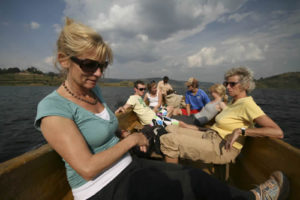 Wake up early and take a walk along the shores of the lake to enjoy the morning sun as you wait for your breakfast. After breakfast, you will be taken for canoeing and a visit to the different islands on the lake. The birdlife within and around the lake is amazing. Some of the islands are breeding grounds for several species. While on the islands, you will be taken to visit the fishing villages, schools and medical centers. You can interact with the local people and learn about how they survive in the island.
Wake up early and take a walk along the shores of the lake to enjoy the morning sun as you wait for your breakfast. After breakfast, you will be taken for canoeing and a visit to the different islands on the lake. The birdlife within and around the lake is amazing. Some of the islands are breeding grounds for several species. While on the islands, you will be taken to visit the fishing villages, schools and medical centers. You can interact with the local people and learn about how they survive in the island.
After 3 to 4 hours of enjoying the beautiful lake, the driver will start the journey to Bwindi Impenetrable National Park which take only 2 hours of driving. Once you reach the park, you will be taken to your hotel for check-in and refreshment. In the late afternoon, the driver will take you to visit the local Batwa 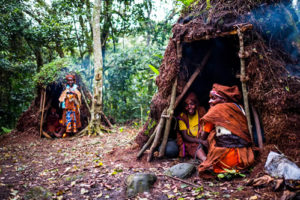 community. The Batwa pygmies originally lived in Bwindi forest as hunters and gatherers for thousands of years. When Bwindi became a national park, the government decided to evict them from the forest. Unfortunately, their resettlement was not wholly successful. The have never fully adapted to life outside the forest. They were forced to adapt to new and unfamiliar neighbors, way of life and economic activities. Poverty is the order of the day and their young men have resorted to alcoholism. During your visit, you will hear from them about the kind of life they lived in while in the forest compared to the reality of today. Some of the Batwa have moved on and are now farmers or cattle keepers.
community. The Batwa pygmies originally lived in Bwindi forest as hunters and gatherers for thousands of years. When Bwindi became a national park, the government decided to evict them from the forest. Unfortunately, their resettlement was not wholly successful. The have never fully adapted to life outside the forest. They were forced to adapt to new and unfamiliar neighbors, way of life and economic activities. Poverty is the order of the day and their young men have resorted to alcoholism. During your visit, you will hear from them about the kind of life they lived in while in the forest compared to the reality of today. Some of the Batwa have moved on and are now farmers or cattle keepers.
Dinner and overnight at Bakiga Lodge or Ichumbi Gorilla Lodge.
Day 3: Gorilla Tracking – Transfer to the Ishasha sector of Queen Elizabeth National Park
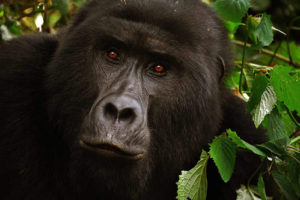 The briefing for gorilla trekking in Bwindi starts at 7:30am. It is important to wake up earlier and take your breakfast. Request for packed lunch from the lodge before going out for the briefing. The briefing is carried out by the park Rangers and Warden. They will share information about the forest, the gorilla families in the particular sector, what to expect and how to conduct yourself while with the gorillas. Gorilla groups in Bwindi will be allocated based on your overall fitness and age. If you wish to go for an easier or harder trek, inform the Rangers about it during the briefing. Only 8 people can track a particular gorilla group in a day. After the briefing, visitors set off in different directions to look for the primates.
The briefing for gorilla trekking in Bwindi starts at 7:30am. It is important to wake up earlier and take your breakfast. Request for packed lunch from the lodge before going out for the briefing. The briefing is carried out by the park Rangers and Warden. They will share information about the forest, the gorilla families in the particular sector, what to expect and how to conduct yourself while with the gorillas. Gorilla groups in Bwindi will be allocated based on your overall fitness and age. If you wish to go for an easier or harder trek, inform the Rangers about it during the briefing. Only 8 people can track a particular gorilla group in a day. After the briefing, visitors set off in different directions to look for the primates.
Gorilla tracking will expose you to thick tropical forest with opportunities to see smaller primates, birds, butterflies, rare plants, waterfalls, streams, rivers, valleys and large mammals. Gorilla trekking in Bwindi can take between 30 minutes to 5 hours depending on which gorilla group you are assigned and their location on the day of your trek. Each gorilla family offers a different experience. Some gorilla families may have more babies or silverbacks hence offering a more interesting experience. Watch as the family members feed, groom, rest, mate and play. The dominant silverback is always alert and observant. Do not do anything surprising that might be taken as a threat. Keep your distance and avoid direct eye contact. Never touch a gorilla even when they pass in your midst. Do not touch a young gorilla as tempting as it is.
After spending one hour with the primates, you will be led back to the starting point and given your certificate of participation. The company Guide/Driver will be waiting for you at the starting point to take you back to the hotel for lunch, refreshment and checkout before starting the journey to the Ishasha sector of Queen Elizabeth National Park.
Dinner and overnight at the luxury Mweya safari lodge, Park View Safari Lodge (Midrange) or Eganzi Lodge for budget rooms.
Day 4: Game drive to see tree climbing lions – Afternoon Boat cruise at the Kazinga Channel
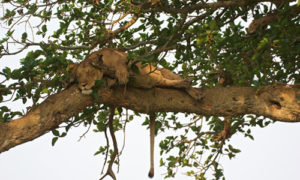 After breakfast, the company Guide will take you for your first game drive at the Ishasha sector of Queen Elizabeth National Park. This sector is less explored but is home to the largest group of tree climbing lions in the world. The sector also has the largest population of the Uganda Kob. The main objective of the game drive is to find the tree climbing lions of Ishasha but with opportunities to catch sight of many of the mammals in the park. The lions love resting on the large fig trees which are common in the sector. It is difficult to say with certainty why the lions in Ishasha love climbing trees compared to lions in other parts of the park. One theory is that there are specific bugs/insects in Ishasha that bite them while resting on the ground.
After breakfast, the company Guide will take you for your first game drive at the Ishasha sector of Queen Elizabeth National Park. This sector is less explored but is home to the largest group of tree climbing lions in the world. The sector also has the largest population of the Uganda Kob. The main objective of the game drive is to find the tree climbing lions of Ishasha but with opportunities to catch sight of many of the mammals in the park. The lions love resting on the large fig trees which are common in the sector. It is difficult to say with certainty why the lions in Ishasha love climbing trees compared to lions in other parts of the park. One theory is that there are specific bugs/insects in Ishasha that bite them while resting on the ground.
After spotting the lions and many of the other park creatures, you will go back to your hotel for lunch and refreshment. The driver will then take you to the Kazinga channel for the afternoon launch cruise. 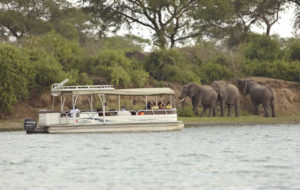 The Kazinga channel is a body of water which connects lake albert to lake George. It has one of the highest concentration of wildlife in East Africa. Expect to spot crocodiles, buffaloes, hippos, elephants and an amazing collection of birds (flamingos, malachite kingfishers, papyrus Gonolek, pink backed pelicans, red chest, shoebill stork, water thick-knee, yellow crown and yellow-billed stork). The Kazinga Channel is where most of the park animals gather to drink and bath – especially during the dry season. During the dry season the experience can be amazing for lack of a better word.
The Kazinga channel is a body of water which connects lake albert to lake George. It has one of the highest concentration of wildlife in East Africa. Expect to spot crocodiles, buffaloes, hippos, elephants and an amazing collection of birds (flamingos, malachite kingfishers, papyrus Gonolek, pink backed pelicans, red chest, shoebill stork, water thick-knee, yellow crown and yellow-billed stork). The Kazinga Channel is where most of the park animals gather to drink and bath – especially during the dry season. During the dry season the experience can be amazing for lack of a better word.
Dinner and overnight at the luxury Mweya safari lodge, Park View Safari Lodge (Midrange) or Eganzi Lodge for budget rooms.
Day 5: Morning game drive at the Kasenyi Sector – Transfer to Kibale National Park – Visit the Bigodi Wetlands Sanctuary.
Wake up early and head for the second game drive at the Kasenyi sector. This game drive is even more rewarding than the first because of the high concentration of wildlife and striking scenery. Expect to spot 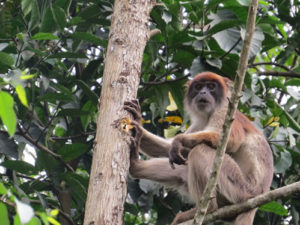 crater lakes, lions, elephants, hyenas, warthogs, Uganda Kobs, Defassa Waterbuck, Topis, Cape buffaloes, black and white Colobus. The game drive goes all the way up to the shores of lake Edward were you can spot birds like the black bee-eater, broad billed roller and Cassin’s grey flycatcher.
crater lakes, lions, elephants, hyenas, warthogs, Uganda Kobs, Defassa Waterbuck, Topis, Cape buffaloes, black and white Colobus. The game drive goes all the way up to the shores of lake Edward were you can spot birds like the black bee-eater, broad billed roller and Cassin’s grey flycatcher.
After the 3 hour game drive, you will be transferred to Kibale National Park with en-route lunch. On arrival at Kibale forest, you will be taken to your hotel for check-in before heading for a tour of the Bigodi wetlands sanctuary. This sanctuary is home to 12 species of primates and is one of the most visited birding sanctuaries in Uganda. Expect to spot over 300 recorded species as well as butterflies.
Dinner and overnight will be at Chimpanzee Forest Guest House for budget and mid-range facilities. The luxury lodge is Turaco Treetops.
Day 6: Chimpanzee Habituation Experience
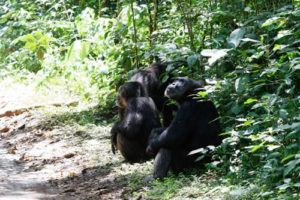 Wake up early once again and take you breakfast as you wait for the company Guide to pick you up from your hotel. It is important to come with packed lunch as you will have a very long day out in the forest. Chimpanzee habituation starts earlier than normal chimpanzee trekking with a briefing at the Kanyanchu visitor information center. The plan is to follow a chimpanzee group from the time they wake up until they make their nests later in the evening. During the activity, you will have opportunities to spot many of the smaller primates including Red Colobus, Red-tailed monkeys and Grey cheeked Mangabeys among 10 other species.
Wake up early once again and take you breakfast as you wait for the company Guide to pick you up from your hotel. It is important to come with packed lunch as you will have a very long day out in the forest. Chimpanzee habituation starts earlier than normal chimpanzee trekking with a briefing at the Kanyanchu visitor information center. The plan is to follow a chimpanzee group from the time they wake up until they make their nests later in the evening. During the activity, you will have opportunities to spot many of the smaller primates including Red Colobus, Red-tailed monkeys and Grey cheeked Mangabeys among 10 other species.
Before heading out to the forest, the experienced Park Ranger will brief you on what to expect while ensuring that the whole activity is very informative and more of a learning experience. If you are 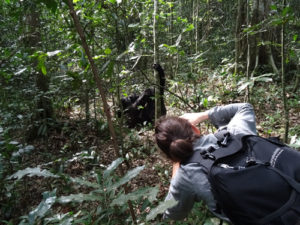 interested in birds and butterflies, you will enjoy hiking in the forest. Of all the birds, look out for the beautiful Great Blue Turaco, olive long tailed cuckoos, superb black bee eaters and the joyful greenbul. Kibale has a population of about 1500 individual chimps. 4 are habituated are being habituated. Kibale National Park is the best place to spot chimpanzees in the world because the chances of seeing them is very high. Unlike chimpanzee trekking which allows only one hour with the chimps, the habituation experience allows you over 4 hours with the primates excluding the time taken tracking them and heading back to the starting point.
interested in birds and butterflies, you will enjoy hiking in the forest. Of all the birds, look out for the beautiful Great Blue Turaco, olive long tailed cuckoos, superb black bee eaters and the joyful greenbul. Kibale has a population of about 1500 individual chimps. 4 are habituated are being habituated. Kibale National Park is the best place to spot chimpanzees in the world because the chances of seeing them is very high. Unlike chimpanzee trekking which allows only one hour with the chimps, the habituation experience allows you over 4 hours with the primates excluding the time taken tracking them and heading back to the starting point.
Dinner and overnight will be at Chimpanzee Forest Guest House for budget and mid-range facilities. The luxury lodge is Turaco Treetops.
Day 7: Transfer to Murchison falls – Visit the top of the falls
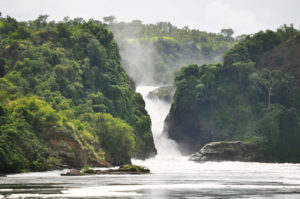 Wake up and take breakfast at your leisure. The Driver will pick you up after breakfast to start the long journey to the Murchison Falls National Park via Fort Portal, Hoima and Masindi. Enjoy the beautiful landscape, Mount Rwenzori and the countryside with several small towns and trading centers. Lunch will be taken along the way. Once you reach the park, the driver will take you straight to visit the top of the falls. Here you will be able to witness the river Nile force its way through a 7-meter gorge before falling 45 meters before continuing with a mighty roar. The area around the falls has incredible natural beauty and is excellent for photography.
Wake up and take breakfast at your leisure. The Driver will pick you up after breakfast to start the long journey to the Murchison Falls National Park via Fort Portal, Hoima and Masindi. Enjoy the beautiful landscape, Mount Rwenzori and the countryside with several small towns and trading centers. Lunch will be taken along the way. Once you reach the park, the driver will take you straight to visit the top of the falls. Here you will be able to witness the river Nile force its way through a 7-meter gorge before falling 45 meters before continuing with a mighty roar. The area around the falls has incredible natural beauty and is excellent for photography.
Dinner and overnight at the Luxury Paraa Safari Lodge, Pakuba Safari Lodge (midrange) or the budget Red Chili Rest Camp.
Day 8: Morning Game drive – Afternoon Launch cruise on the river Nile
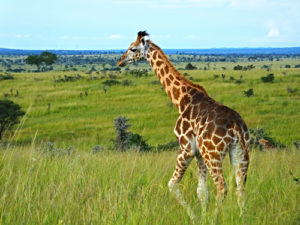 The morning game drive in Murchison falls is designed to allow visitors spot the early rising animals and those retreating back to their dens after hunting at night. This is the best time to spot leopards, hyenas and other predators. The driver will begin the game drive at 6:30am. The game drive goes through the northern banks of the great river Nile all the way up to the Nyamsika plateau. Along the way, will spot the Uganda kob, cape buffaloes, hartebeest, Bohor reedbuck, Rothschild’s giraffes and waterbucks. Other animals to look out for are the Bohor reedbuck, bush duiker, bush pigs, bushbucks, oribi, sitatunga and warthogs. Expect to also encounter small primates inside the park including the common baboon, vervet monkeys and colobus monkeys.
The morning game drive in Murchison falls is designed to allow visitors spot the early rising animals and those retreating back to their dens after hunting at night. This is the best time to spot leopards, hyenas and other predators. The driver will begin the game drive at 6:30am. The game drive goes through the northern banks of the great river Nile all the way up to the Nyamsika plateau. Along the way, will spot the Uganda kob, cape buffaloes, hartebeest, Bohor reedbuck, Rothschild’s giraffes and waterbucks. Other animals to look out for are the Bohor reedbuck, bush duiker, bush pigs, bushbucks, oribi, sitatunga and warthogs. Expect to also encounter small primates inside the park including the common baboon, vervet monkeys and colobus monkeys.
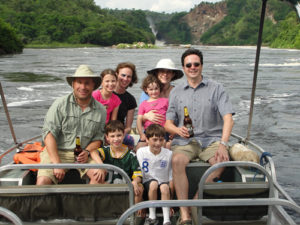 After the morning game drive, the driver will take you back to the hotel for lunch and refreshment. In the afternoon, you will be taken for a boat cruise along the river Nile. The section of the Nile right after the falls has one of the largest concentration of wildlife in Uganda. Expect to spot countless hippos and crocodiles. Birders should expect to spot over 300 species including bee- eaters, cormorants, Egyptian geese, goliath heron, hornbill, kingfishers, pelican, shoebill stork and saddle-bill stork. The boat cruise ends close to the waterfalls in a place known as the “Devil’s Cauldron”. Take as many photos of the waterfalls before disembarking and walking up to the top of the falls where the driver would be waiting.
After the morning game drive, the driver will take you back to the hotel for lunch and refreshment. In the afternoon, you will be taken for a boat cruise along the river Nile. The section of the Nile right after the falls has one of the largest concentration of wildlife in Uganda. Expect to spot countless hippos and crocodiles. Birders should expect to spot over 300 species including bee- eaters, cormorants, Egyptian geese, goliath heron, hornbill, kingfishers, pelican, shoebill stork and saddle-bill stork. The boat cruise ends close to the waterfalls in a place known as the “Devil’s Cauldron”. Take as many photos of the waterfalls before disembarking and walking up to the top of the falls where the driver would be waiting.
Dinner and overnight at the Luxury Paraa Safari Lodge, Pakuba Safari Lodge (midrange) or the budget Red Chili Rest Camp.
Day 9: Visit the Ziwa Rhino Sanctuary – Transfers to Kampala or Entebbe
This will be your last day of the tour. Wake up at your own time taking into consideration your flight details. The driver will come to pick you after breakfast and as soon as you are ready to begin the journey 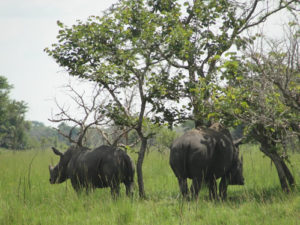 back to Kampala. As you head back to Kampala, the drive will stop for two hours at the Ziwa Rhino sanctuary. You will be received by the chief Ranger who will brief you about the Centre. Uganda once had over 1000 Rhinos roaming some of the national parks. They were hunted down by poachers for their valuable horns until less than 10 remained in Murchison Falls National Park. The Ziwa Rhino sanctuary was created to protect the remaining lions and help in breeding until their numbers are enough to allow for reintroduction to the wild. The Ziwa Rhino Sanctuary is also a leading Rhino research Centre funded by several international wildlife conservation Agencies.
back to Kampala. As you head back to Kampala, the drive will stop for two hours at the Ziwa Rhino sanctuary. You will be received by the chief Ranger who will brief you about the Centre. Uganda once had over 1000 Rhinos roaming some of the national parks. They were hunted down by poachers for their valuable horns until less than 10 remained in Murchison Falls National Park. The Ziwa Rhino sanctuary was created to protect the remaining lions and help in breeding until their numbers are enough to allow for reintroduction to the wild. The Ziwa Rhino Sanctuary is also a leading Rhino research Centre funded by several international wildlife conservation Agencies.
End of Tour
Safari Inclusions and Exclusions
The 9 days Uganda safari package includes;
- Gorilla permits
- Chimpanzee permits
- Batwa visit
- Game drives
- Boat cruises
- Lake Bunyonyi tour
- Ziwa Rhino sanctuary
- Park Entrance and Ranger fees
- All activities included in the tour package
- Transfers to and from the airport
- A standard 4X4 tour van
- An experienced driver with great knowledge about the country and who speaks excellent English
- Accommodation for 8 nights including meals and water
- Meals and water outside the hotel
- Government taxes
The safari excludes;
- Air tickets and entry visas to Uganda
- Medical and Travel insurance
- Tips to the gorilla trekking porters, rangers and staff at the hotels
- Expenses on alcohol, cigars, phone calls, soft drinks, souvenir and anything that can be considered personal
Packing List
While on a safari in Uganda, you should pack some or all of the following items;
A camera: A safari in Uganda is incomplete without a good camera. You cannot come back from a safari without evidence to show your friends and family about the wonderful time you had.
Hiking Boots: Gorilla and chimpanzee trekking requires good hiking boots for comfort especially during the rainy season.
Stocking: Long stockings will help in tucking in your trousers to avoid crawling insects.
Rain Jacket: This is very important while hiking during the rainy season. The rains can be unpredictable in Uganda especially when you consider global warming. There is always the possibility of rain in Bwindi forest regardless of season of the year.
Long Shirts and trousers: The game parks and forests contain insects and other crawling creatures that you need to keep off. There are also sharp tree branches and thorns. Long sleeved shirts and trousers will keep off any insects and also protect you from sharp trees.
Hand gloves: Hand gloves are important for grabbing leaves and tree branches while hiking through dense forest.
Water: Many of the activities mentioned above involve staying out for long hours in the sun. Expect to get dehydrated and tired if you do not pack some water. You need to have water filtration tablets if you cannot move with bottled water.
Packed Snack: This is very important for the chimpanzee habituation experience and gorilla trekking. It is difficult to predict when the two activities will end. You are better off parking lunch so that you don’t get hungry.
Best time to Visit Uganda
The best time to visit Uganda like most countries in East Africa is in June to August. You can also visit between December to February. These are the months with little to know rains hence allowing for better wildlife viewing. During the peak/dry season, animals gather to drink in the few remaining waterholes allowing visitors to spot most of them in once place. The roads are passable since there is no mud.
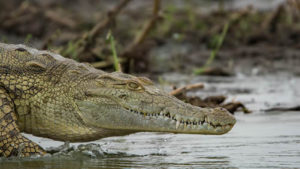 The low/wet season is in the months of March to April and also October to November. These months receive less visitors because of the heavy rains. Conditions in the park are not so good as roads and sometime bridges get damaged. The animals scatter in different areas of the park because there is plenty of water and fresh grass. This scattering of animals can affect the quality of game drives. The wet season has its advantages. There are discounts in the hotels and you can have a more private tour since there are fewer tourist. The rainy season is excellent for birding because it is usually the breeding season with more migratory birds from as far as Europe. The rain season leaves the country very beautiful and green.
The low/wet season is in the months of March to April and also October to November. These months receive less visitors because of the heavy rains. Conditions in the park are not so good as roads and sometime bridges get damaged. The animals scatter in different areas of the park because there is plenty of water and fresh grass. This scattering of animals can affect the quality of game drives. The wet season has its advantages. There are discounts in the hotels and you can have a more private tour since there are fewer tourist. The rainy season is excellent for birding because it is usually the breeding season with more migratory birds from as far as Europe. The rain season leaves the country very beautiful and green.
Note: It is important to note that Uganda can be visited throughout the year and don’t take what we discussed above to imply that the rain season is not ideal for a visit. Uganda receives visitors throughout the year and all activities remain open. With global warming, we see rains coming even in the so called dry season while the wet season can have surprising little rainfall.
Some of the Lodges
Enganzi Game Lodge: This budget lodge is built in an area with remarkable beauty and in Queen Elizabeth National Park. The lodge is close to Lake George and the Kyambura Gorge. Though a budget lodge, it offers quality services with 11 self-contained rooms. Each rooms free Wi-Fi, a balcony, a bathroom and bathtubs/showers.
Other amenities include a restaurant, a bar, a coffee shop, a luggage store, large parking space and a help desk which is open 24 hours a day. Guests can also request for laundry and dry cleaning services. House keepers are available to ensure that all the rooms are clean at all times. Booking a room includes breakfast for all occupants. Enganzi Game lodge has a family cottage for large groups of travelers with children.
Bakiga Lodge: This is a mid-range lodge built in the Ruhija sector of Bwindi Impenetrable National Park. The Lodge is surrounded by remarkable scenery and great views of the forest. The lodge aims to provide quality accommodation facilities while also insuring that the local community benefits. The rooms come in form of self-contained tents and cabins. Each room has a bathroom, Wi-Fi, a large single/twin bed, a hot shower, balcony and working table. Other amenities include indoor fireplaces, parking space, a restaurant and credit card facilities. All profits are channeled to an NGO called the Bakiga Community Project. This project helps communities close to the lodge gain access to clean water. Book with this lodge if you want to ensure that the money you pay also benefits the local community. Bakiga lodge is built close to the starting point for gorilla trekking in Ruhija sector hence offering tourists easy access to park offices.
Lake Bunyonyi Eco Resort: This is a Luxury Resort built on one of the islands of Lake Bunyonyi. The lodge has commanding views of all the other islands and the mainland. Lake Bunyonyi Eco Resort offers 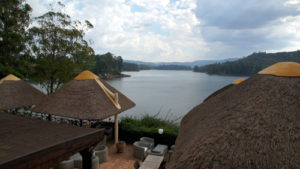 10 self-contained cottages with lush green forest on the premises. Each cottage has a private balcony, large windows, African art pieces and wooden floors. Every room also has free Wi-Fi, bathrooms and working desks. Lake Bunyonyi Eco Resort organizes cultural entertainment activities for guests every evening. Local dance groups are hired to entertain guest through traditional songs, dance, drama and storytelling. The Resort is arguably the best for tourists who have come for nature walks, island hopping, swimming, canoeing, camping, family retreats and honeymoon.
10 self-contained cottages with lush green forest on the premises. Each cottage has a private balcony, large windows, African art pieces and wooden floors. Every room also has free Wi-Fi, bathrooms and working desks. Lake Bunyonyi Eco Resort organizes cultural entertainment activities for guests every evening. Local dance groups are hired to entertain guest through traditional songs, dance, drama and storytelling. The Resort is arguably the best for tourists who have come for nature walks, island hopping, swimming, canoeing, camping, family retreats and honeymoon.

